One Galaxy or Many?
This World Wide Web page written by
Dan Styer,
Oberlin College Physics Department;
http://www.oberlin.edu/physics/dstyer/Astronomy/GalaxyHistory/index.html;
last updated 29 November 2000.
How did we find out about galaxies?
The answer is interesting in its own right, but it also reveals a lot
about the nature of controversy and debate in the development of science.
This sketchy timeline outlines the history of our understanding.
In 1781 comet hunter Messier publishes a
list
of 103 "fuzzy objects", not to be
confused with comets. (The list has since been extended to 110 objects.)

In this course we have encountered many of the objects Messier cataloged --
we classify them into a host of categories including:
- Emission nebulae
- Reflection nebulae
- Open clusters
- Globular clusters
- Planetary nebulae
- A supernova remnant (the Crab nebula)
However, other objects
in the catalog don't fit into any of these categories.
Because these are shaped somewhat like pinwheels, they
are called "spiral nebulae".
1770-1785: William and Caroline Herschel
The Herschel siblings, musicians and astronomers, develop the "grindstone"
model of the galaxy, with the sun near its center. This model is generally
accepted until the early years of the twentieth century.
1908: 60-inch telescope
The huge reflecting telescope atop
Mount Wilson
is commissioned. Its mirror is 60 inches (five feet) across,
and for good observing conditions it is located in the clear mountain air
high above the small agricultural community of Los Angeles, California.
Because the observatory was deliberately positioned at such a remote site,
transportation of telescope components to the site posed difficulties:


But finally the assembled instrument was commissioned:
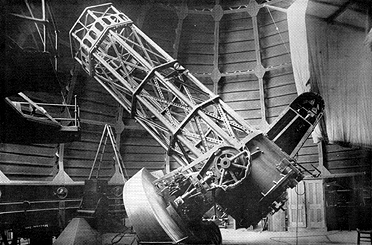 (Note the rivet-dominated construction, similar to that used in the
steamship Titanic.)
(Note the rivet-dominated construction, similar to that used in the
steamship Titanic.)
Leavitt (who worked at Harvard and had studied at
Oberlin College from 1885 to 1888) discovers the uncalibrated period-luminosity
relation for Cepheid variable stars.
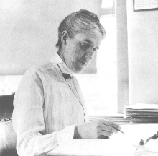
1917: Harlow Shapley
Shapley, working with the 60-inch telescope at Mount Wilson,
calibrates the period-luminosity relation for Cepheids
and measures the distances to globular clusters.
He postulates a galaxy much larger than previously
thought, and with the sun near its edge.
Questions remain
Does the center of the globular clusters really mark the
center of our galaxy, as Shapley assumed?
Or were they, say, the result of an explosion that happened
to occur in the constellation Sagittarius?
What are the spiral nebulae?
Their spectra are like those of stars, so they are not emission
nebulae: they could be either reflection nebulae or else collections
of stars.
As so often happens in science, there was controversy.
But as rarely happens, a formal debate was arranged to
air all sides of these questions.
On 26 April 1920 two astronomers, Harlow Shapley and Heber Curtis,
met in Washington, DC, for a debate on
"The
Scale of the Universe".
The Shapley-Curtis debate
Harlow Shapley | Heber Curtis |
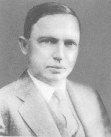 | 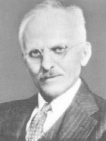 |
| Globular clusters mark the center of our galaxy. |
The clumped distribution of globular clusters is a fluke. |
| Our galaxy is about 300,000 light years in diameter. |
Our galaxy is about 30,000 light years in diameter. |
| The sun is near the edge of our galaxy. |
The sun is near the center of our galaxy. |
| Spiral nebulae are reflection nebulae within our own
galaxy: they are condensing
into planetary systems ("baby solar systems"). |
Spiral nebulae are star systems outside our galaxy. |
| Spiral nebulae can't be outside our galaxy:
We see novae in spiral nebulae, and no one star explosion
could possibly create so much energy. |
Those novae are exploding stars within our
own galaxy that happen to be in front of a spiral
nebula. |
|
The astronomer Van Maanen has detected the rotation of
a spiral nebula, using two pictures taken a year apart.
If spiral nebulae were entire, distant, star systems,
they would rotate once in several thousand years,
not once in two or three years. |
Van Maanen's observation was an artifact.
They do rotate once in several thousand years. |
|
The absorption of light by dust outside our galactic
disk is unimportant. |
Agreed. |
Using radio telescopes and larger optical telescopes, all of these
issues have been resolved. The current consensus (which is probably
but not necessarily correct) is that:
- Globular clusters do mark the center of our galaxy,
as Shapley argued.
- Although we still lack a precise figure, we
estimate that our galaxy is about 75,000 light years in diameter.
Both debaters were wrong.
- The sun is near the edge of our galaxy, as Shapley
argued.
- Spiral nebulae are star systems outside our galaxy,
as Curtis argued.
- The novae we see in spiral nebulae in fact are
part of those nebulae, and the explosions are more
powerful than anyone could have expected.
Both debaters were wrong.
- Van Maanen's observations were an artifact,
as Curtis argued.
- The absorption of light by dust outside our galactic
disk is important. On their one point of agreement,
both debaters were wrong.
A larger telescope was needed to resolve these issues.
1917: 100-inch telescope
You might think that a 100-inch telescope would be better than
a 60-inch telescope by a factor of 100/60 = 5/3 = 1 2/3 times.
In fact, however, the quality of a telescope is limited by
the area of its mirror, not the diameter.
So a 100-inch telescope is better by a factor of
(5/3)2 = 2.78.
In 1917 Mount Wilson Observatory commissioned the Hooker telescope
with a mirror diameter of 100 inches (8 feet, 4 inch).
It is still in use, and looks like this:

Here's the exterior of the Hooker telescope's dome:
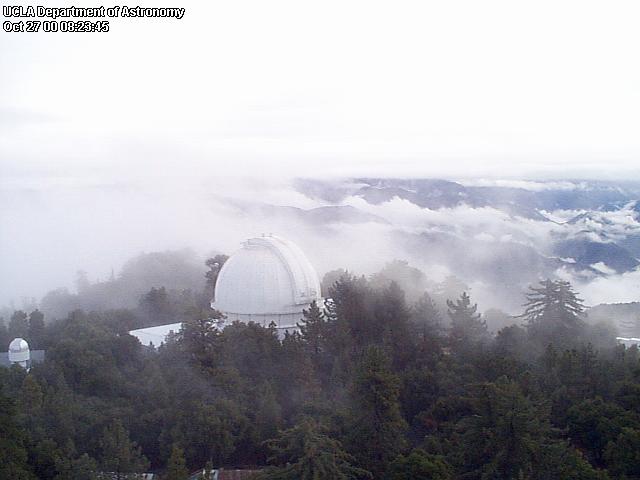
And an overview of the Mount Wilson site:
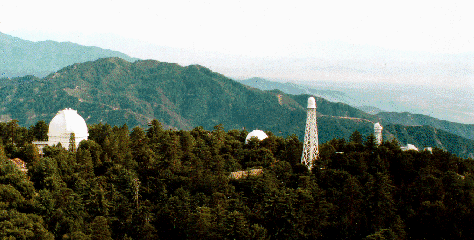 (Dome for the 100-inch on left, dome for the 60-inch at center.
The towers belong to small telescopes for observing the sun.)
(Dome for the 100-inch on left, dome for the 60-inch at center.
The towers belong to small telescopes for observing the sun.)
1923: Edwin Hubble
In this year, Hubble uses the 100-inch telescope to photograph
stars in the edge of M31, the "Andromeda Nebula". He looks for
novae on his photographic plates, and believes he identifies
three. Comparison with a similar plate taken a week or two
earlier shows that one of the supposed novae is actually
a Cepheid variable!
Hubble's plate:
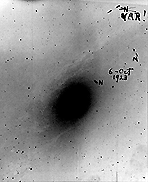 The three stars identified as novae are marked "N". One
"N" is crossed out and replaced by "VAR!" (variable star!).
The three stars identified as novae are marked "N". One
"N" is crossed out and replaced by "VAR!" (variable star!).
Hubble measures the period of the Cepheid variable and its apparent
magnitude.
Using the period-luminosity relation he finds its absolute magnitude.
Using the magnitude-distance relation he finds its distance.
Hubble announces that M31 is 900,000
light years away, far outside of our own galaxy.
The "Andromeda Nebula" had become the "Andromeda Galaxy".
(Note: The modern distance estimate is 2,200,000 light years.
And Hubble himself continued to use the old-fashioned term "Andromeda
Nebula" until the day he died.)
1944: Walter Baade
Stars in the outer edge of M31 constitute important evidence that
this "spiral nebula" is in fact a galaxy. So does its immense
distance. But final proof awaits
confirmation that the densely packed interior also consists of stars.
 The German-born astronomer Walter Baade had been working at Mount Wilson
since 1931. Although he had applied for US citizenship, either
he or the Immigration and Naturalization Service lost some papers,
and the application never went through.
When World War II broke out,
most of the Mount Wilson scientific staff went off to work on
war-related research. Such work was forbidden to Baade,
who had been classified as an enemy alien.
As such, he had the 100-inch telescope all to himself.
The German-born astronomer Walter Baade had been working at Mount Wilson
since 1931. Although he had applied for US citizenship, either
he or the Immigration and Naturalization Service lost some papers,
and the application never went through.
When World War II broke out,
most of the Mount Wilson scientific staff went off to work on
war-related research. Such work was forbidden to Baade,
who had been classified as an enemy alien.
As such, he had the 100-inch telescope all to himself.
Furthermore, the observing conditions at Mount Wilson
had been deteriorating due to
extraneous light from the no-longer quaint agricultural center
of Los Angeles. That city turned off its lights
under a wartime blackout order, and Baade made use of the
darkest skies Mount Wilson would ever see.
Even with these advantages, Baade could not resolve individual
stars within the center of M31. Finally, in desperation,
Baade turned from the type of photographic plates traditionally used
in astronomy, which are most sensitive to blue light, to
a type most sensitive to red light.
He exposed them for eight hours are more.
He introduced new techniques for keeping the telescope
stable and accurately pointed for such long exposure times.
Finally, Baade managed to obtain a plate resolving thousands of
individual stars in the heart of M31. In Baade's own words:
"After the shooting was over, it was quite
clear that all the precautions had actually been necessary; I had just
managed to get under the wire, with nothing to spare."
Baade's
article
announcing his achievement in
Astrophysical Journal had to be printed with a special
process, as conventional printing would render the image smudgy.
Beautiful, distant, and mysterious,
spiral galaxies entered the public imagination.
The famous 1946 film "It's a Wonderful Life"
(directed by Frank Capra, starring James Stewart)
starts with a sequence visualizing angels as spiral galaxies.












